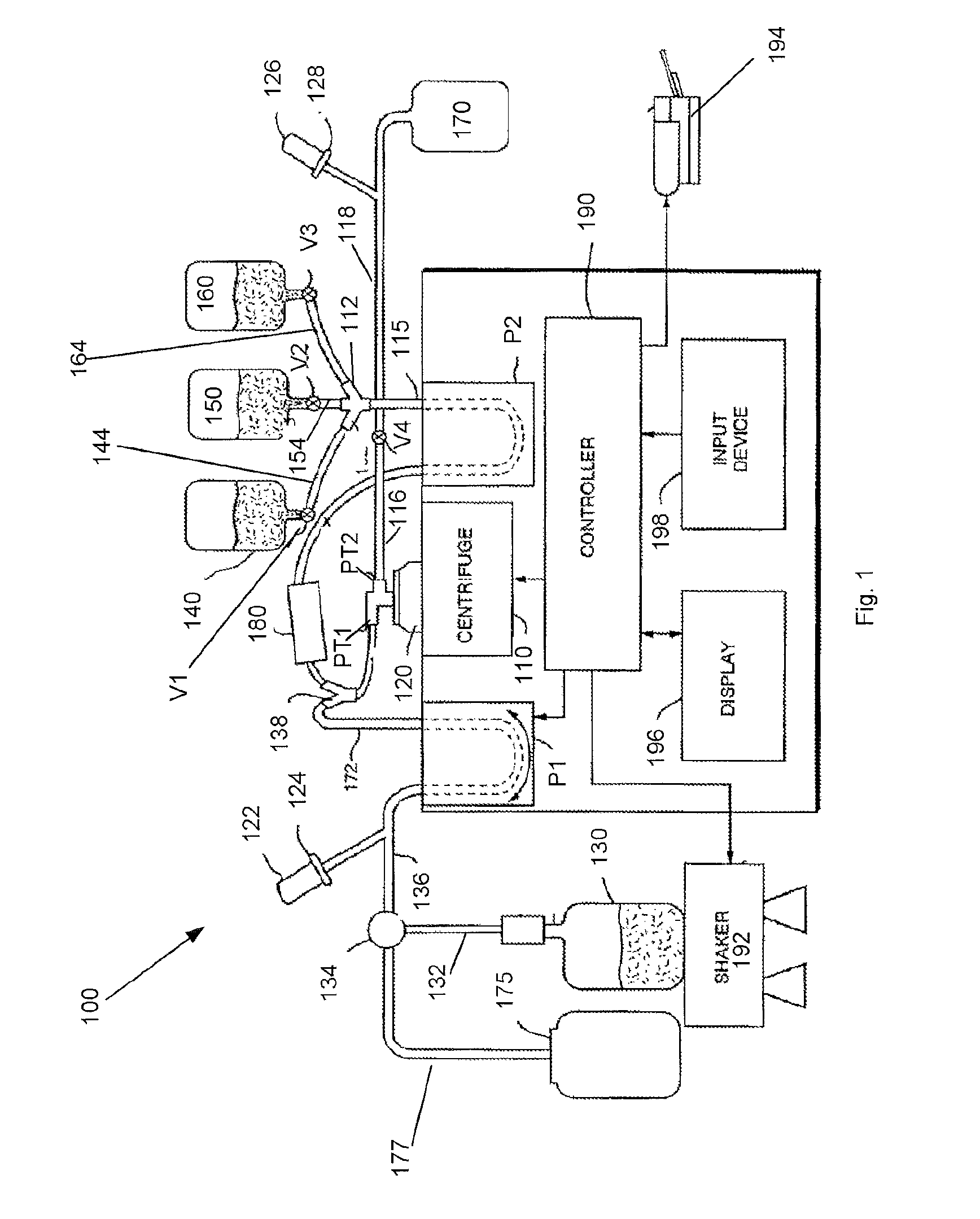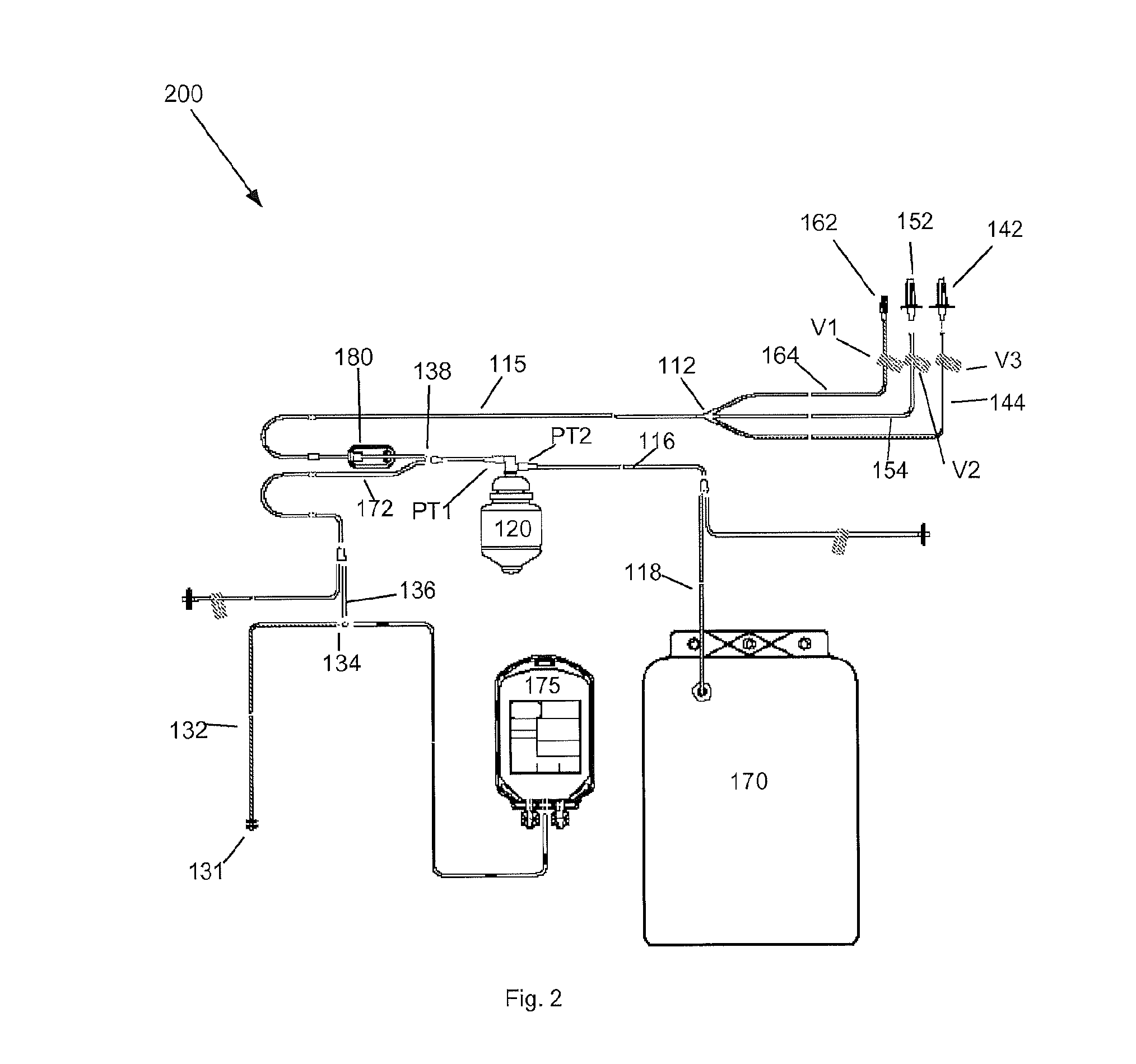System and method for automated platelet wash
a technology of platelet washing and system, applied in specific use bioreactors/fermenters, centrifuges, biomass after-treatment, etc., can solve the problems of increasing the severity of the reaction
- Summary
- Abstract
- Description
- Claims
- Application Information
AI Technical Summary
Benefits of technology
Problems solved by technology
Method used
Image
Examples
Embodiment Construction
[0027]Referring to. FIGS. 1 and 2, an automated platelet wash system 100 uses a centrifuge 110, such as the centrifuge bowl described within U.S. Pat. No. 4,983,158, which is hereby incorporated by reference, to separate platelets from its supernatant (e.g., the fluid in which the platelets are suspended). Other types of separation chambers and devices may be used, such as, without limitation, a standard Latham type centrifuge (FIG. 3C), as described in U.S. Pat. Nos. 3,145,713 and 5,882,289, which are hereby incorporated by reference.
[0028]The centrifuge 110 includes a rotating bowl 120 and stationary input and output ports PT1 and PT2 that are typically closely coupled to the bowl interior by a rotary seal 74 (see FIG. 3A). Although the material and size of the bowl 120 may vary depending upon the application and amount of platelet product to be washed, preferred embodiments of the present invention utilize bowls having volumes ranging from 210 to 275 ml and made from K-resin. Add...
PUM
| Property | Measurement | Unit |
|---|---|---|
| volumes | aaaaa | aaaaa |
| volume | aaaaa | aaaaa |
| time | aaaaa | aaaaa |
Abstract
Description
Claims
Application Information
 Login to View More
Login to View More - R&D
- Intellectual Property
- Life Sciences
- Materials
- Tech Scout
- Unparalleled Data Quality
- Higher Quality Content
- 60% Fewer Hallucinations
Browse by: Latest US Patents, China's latest patents, Technical Efficacy Thesaurus, Application Domain, Technology Topic, Popular Technical Reports.
© 2025 PatSnap. All rights reserved.Legal|Privacy policy|Modern Slavery Act Transparency Statement|Sitemap|About US| Contact US: help@patsnap.com



